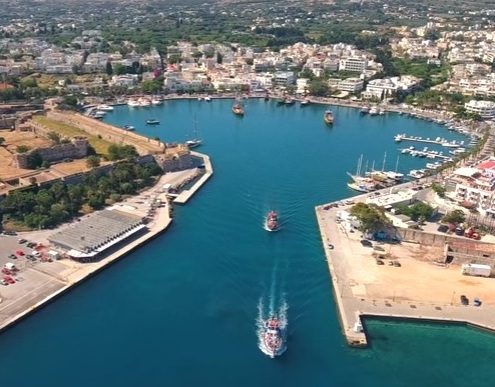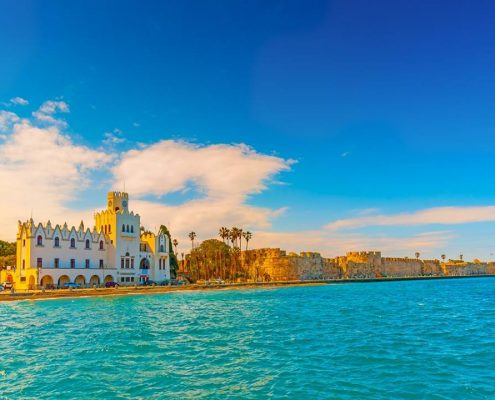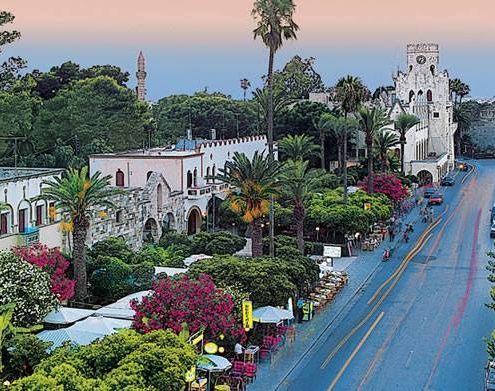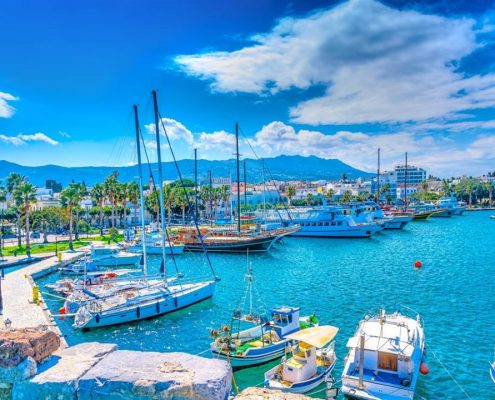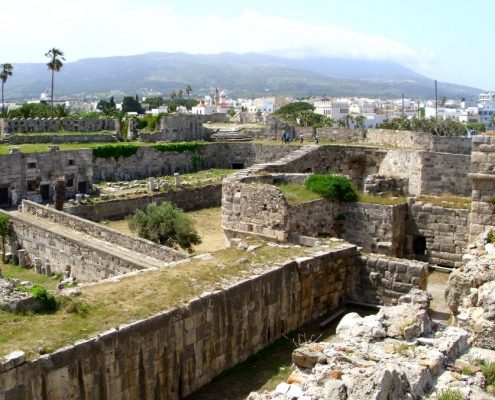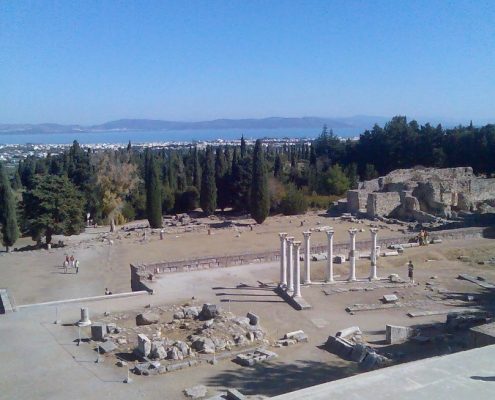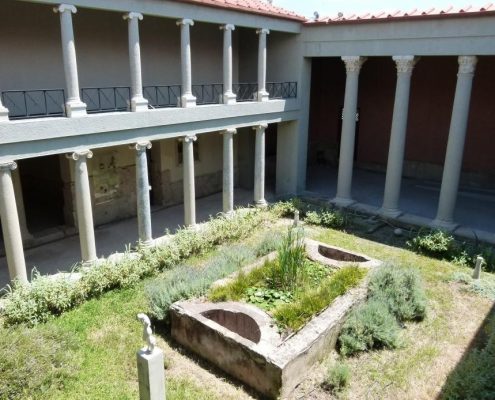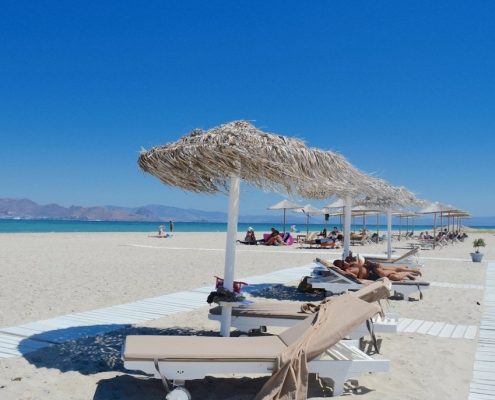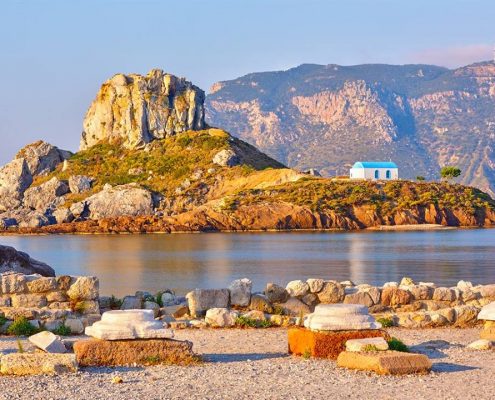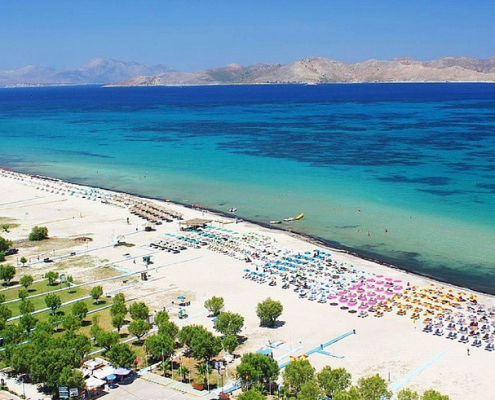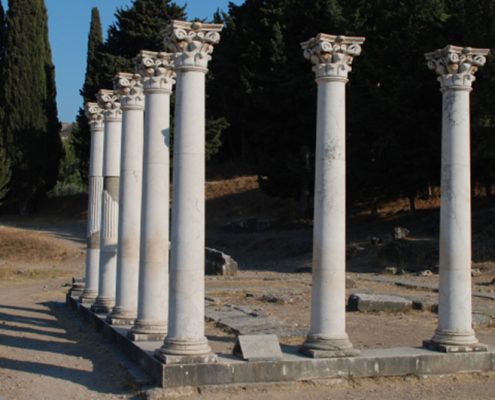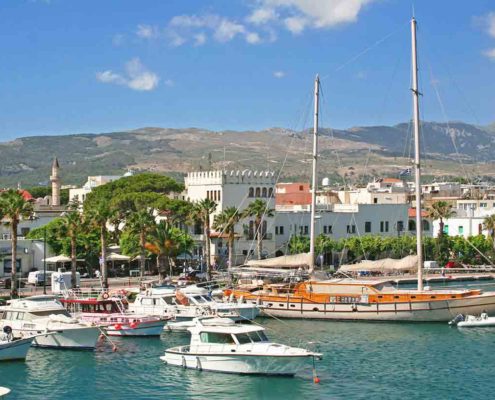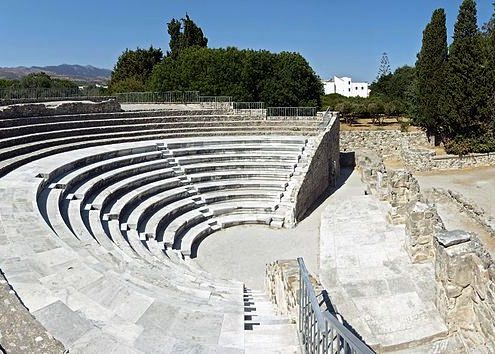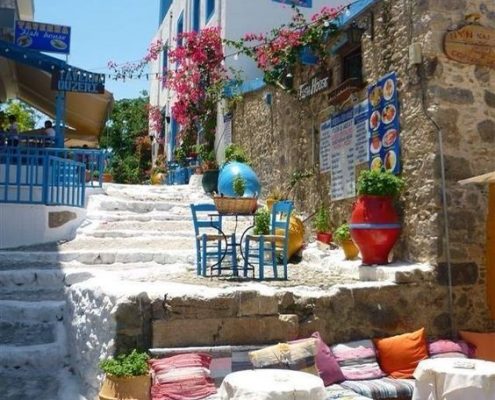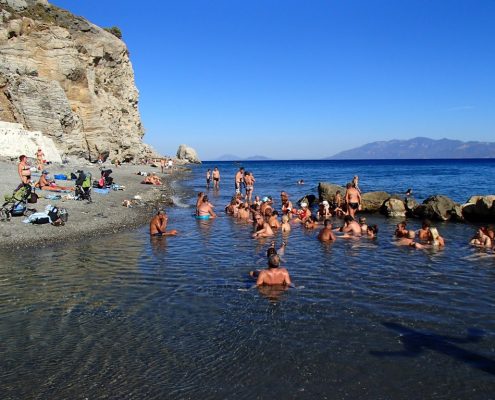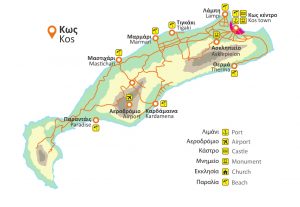
KOS GUIDE: THE ISLAND OF HIPPOCRATES
Kos, the home of Hippocrates, is the third largest island of the Dodecanese. Its green slopes, its endless beaches, the traditional settlements, as well as the cosmopolitan atmosphere it has, completely justify the characterization attributed to it thousands of years ago by the ancient Greeks: “Blessed isle”.
HISTORY
Kos is the meeting point of ancient Greek, Western and Eastern civilizations, and its center is literally an outdoor archaeological museum with excellent samples of the civilizations that passed from the island and left their mark.
Kos had a strong presence in politics over the centuries, having participated in the Doric Exapolis with the three cities of Rhodes, Knidos and Halicarnassus, but also in the Persian Wars and the League of Delos. When the Asklepieion was founded, it acquired nationwide immunity because of its great significance for the treatment of body and mind.
From the Romans and the Arabs, Kos successively passed to the Venetians, the Genoese and the Knights of the Saint John Order. In 1522 it was occupied by the Ottomans, who were succeeded by the Italians in 1912 until it was united with the Dodecanese in 1943 and with the rest of Greece in 1948.
SIGHTS
The castle of the Knights: The impressive monument of the Venetian domination is one of the four castles of the island, and is a typical example of defensive fortification with double walls and a moat. Also very impressive is the medieval wall that surrounded part of the ancient city and is still visible in some parts of the port and the ancient agora.
The archaeological museum is very important for the study of the island’s history as its collection includes prehistoric findings, Hellenistic and classical sculptures.
In Kardamena you will also find the Nautical Museum, with interesting exhibits from the history and the cultural tradition of the island. You might also like to visit Casa Romana, a Roman mansion in ancient Roman villa style, built over the ruins of an older Hellenistic home. Do not miss a visit to the Thermes or Warm Baths, circular baths of the 3rd or 4th century B.C., which include parts of the ancient walls, with inscriptions and mosaics.
HIPPOCRATES
One of the most famous and precious monuments on the island is the the plane tree of Hippocrates: It is believed that Hippocrates taught his students under the shadow of this tree. The tree’s diameter is 12 meters, and it is said that it is 2400 years old. Nowadays the tree faces age problems, but an experienced team is fighting for its survival.
The Asklepieion of Kos is one of the most impressive monuments of Kos, which began most probably during the 4th century B.C. and is 4 km away from the city. It was the largest hospital of antiquity, which treated body and mind, while it also housed the medical school that was founded by Hippocrates.
BEACHES
In Kos you have endless options for swimming depending on your taste and your mood: Paradise, where the fine white sand meets the cedars in a charming bay many kilometers long. The beach is organized with many sun beds, water sports and restaurants.
Therma, where the wild beauty of the scenery meets the calmness of the soul and the body with a dive in the warm waters of the small lake that is formed right in front of the beach. Don’t leave from Kos before visiting this beach with the unique atmosphere.
Lambi and Lambi Mylos for a quiet swim, Tingaki for relaxation under the tamarisk trees, and Kardamena, for its organized beach, but also for the quieter small beaches with sand dunes that you will find if you take the road to the right of the village.
TRADITION
Here on the island, tradition is really prominent on the locals’ everyday lives as well as in special occasions. On the various Saints celebration days grand fairs are organised, with lots of dancing and local delicacies. During the “Hippokratia”, a summer fair celebrating Hippocrates, there are many exhibitions and dancing events, while every Sunday, during the summer, at Asklepieion you can see the enacting of the Oath of Hippocrates.
The Greek version of Helloween, “Apokries” during February, is also celebrated in a very lively and playful manner.
On August 15, the day of the Dormition of Mother of Christ, on July the 13th, the day celebrating Saint Paraskevi as well as on St John’s celebration days local fairs take place, with dancing and music while traditional goat stew and rice is served to the pilgrims.
ACTIVITIES
Kos is famous for its large and modern network of cycle routes, which pass from its center, as well as for the strong winds that make it a “paradise” for surfers from around the world. Depending on the beach that you will choose, you can enjoy wind or kite surfing, as well as any other type of water sports.
At Mastihari of Kos you can visit the “Garden of Hippocrates”, a philosophical and cultural center dedicated to Hippocrates, where during the summer many events and seminars (mosaic, painting, ceramics) take place.
The lagoon at Alyki is another very interesting destination, a unique habitat that is home for rare birds and fish, and their wetland in Psalidi, a passage of many beautiful species of migratory birds on their journey to the South.
In the summer you can attend various cultural events on the island, such as the Hippocrateia, the Irakleia and the Dikaia events, in the respective municipalities of the islands, events that include reciting of the Oath of Hippocrates, classical music concerts, theatrical performances, ancient tragedies, folklore material exhibitions, special educational-entertaining events for children, and sailing competitions.
FAITH AND DEVOUTNESS
Those of you who want to make a pilgrimage to the many churches of the island can light a candle in the Church of Saint John the Baptist or Seven Steps, in the catholic church Agnus Dei, and visit the multitude of early Christian basilicas that adorn the island, such as the three-aisles basilica of Saint Stephen with the wonderful view to the clear blue waters of the Aegean Sea.
FLAVORS
For the lovers of traditional flavors, apart from fresh fish and seafood at the seaside restaurants, there are also the villages of Asomatos, Pyli, and Zia, where you can east local delicacies, such as oatmeal with meat, walk in the whitewashed alleys, and admire a beautiful sunset in the turquoise waters that lie at your feet.
If you want to try another type of dish of the island’s cuisine, you can head to the “Turkish” district, near the center of the city, and try traditional oriental delicacies, the best of which is lachmatzoun. It is worth trying the very special “possa” cheese (goat cheese made in red wine), as well as the tomato sweet and baklava with local honey, kanellada and soumada, which comes from neighboring Nisyros.

